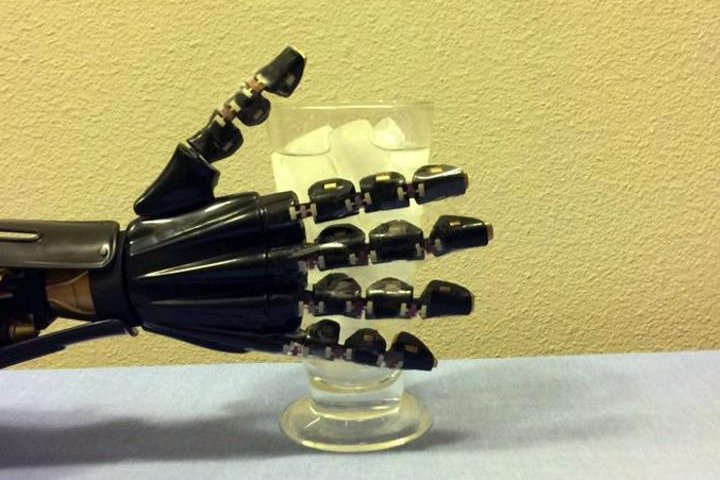Researchers from the University of Houston have reported a breakthrough in stretchable electronics that can serve as an artificial skin, allowing a robotic hand to sense the difference between hot and cold. Photo courtesy the University of Houston
Sept. 13 (UPI) -- Researchers at the University of Houston have developed artificial skin which gives a sense of touch to robotic hands.
The research, published today in Science Advances, is considered a breakthrough in stretchable electronics that can serve as an artificial skin, allowing robotic hands to sense the difference between hot and cold temperatures.
The study is the first to create a semiconductor in a rubber composite format, designed to allow the electronic components to retain functionality after the material is stretched by 50 percent.
"Our strategy has advantages for simple fabrication, scalable manufacturing, high-density integration, large strain tolerance and low cost," Cunjiang Yu, assistant professor of mechanical engineering at the University of Houston, said in a press release.
The researchers created the electronic skin and used it to demonstrate that a robotic hand could sense the temperature of hot and iced cold water in a cup. The result was the skin was able to interpret the computer signals sent to the hand and reproduce the signals as American Sign Language.
"The robotic skin can translate the gesture to readable letters that a person like me can understand and read," Yu said.
Researchers prepared the stretchable composite semiconductor using a silicon-based polymer called polydimethylsiloxane and tiny nanowires to make a solution, which hardened into a material that used the nanowires to transport electric current.
"We foresee that this strategy of enabling elastomeric semiconductors by percolating semiconductor nanofibrils into a rubber will advance the development of stretchable semiconductors," the researchers wrote in the study, suggesting it will "move forward the advancement of stretchable electronics for a wide range of applications, such as artificial skins, biomedical implants and surgical gloves."















